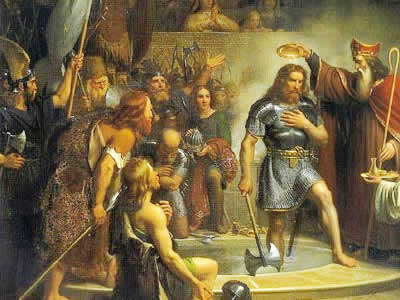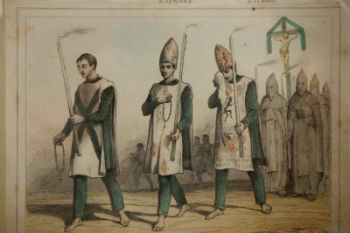Disaggregation is the term historians use to explain the fall of the Roman Empire, which happened in 476 d. a., when the last Roman emperor, Romulus Augustus, was deposed by odoacer, king of the germanic people herulus. The western part of the empire was occupied by the Germans, and the eastern part continued to exist under the name of Byzantine Empire.
Crisis of the Roman Empire
THE crisis of the roman empire it began from the II-III century d. Ç. This period was marked by the economic crisis, corruption, successive coups and assassinations carried out against emperors and, as a final element, the Germanic invasions.
The third century was marked by a great succession of emperors, which evidenced the instability of this period, since, in an approximate period of 50 years, the Roman Empire had about 16 emperors - many of them dead after conspiracies.
Furthermore, the end of the Roman territorial expansion strongly affected the economy. From the second century, the Roman Empire began to prioritize the maintenance of the gigantic conquered territory. This directly affected the slave system, which was sustained from prisoners of war brought into the Empire as slaves. THE
crisis of the slave system it was expanded as the conquered peoples received the right to Roman citizenship.This context triggered an economic crisis due to the decrease in agricultural production and the increase in food prices. The price of food generated hunger, and riots happened in certain regions. In addition, this economic crisis directly affected the maintenance of armies located in the limes, the borders of the Roman Empire.
Germanic
The economic crisis resulted in the dwindling of the Roman military contingent and thus the borders became vulnerable to foreign attacks. Borders have always been threatened by foreign peoples, but from the 2nd century onwards this threat became more accentuated and, in the 5th century, it became unsustainable with the migratory flow of the Germanic.
The Germanic peoples were called “barbarians” by the Romans for not sharing the same culture and not speaking Latin. They inhabited regions north and east of the borders of the empire, which were called Germania by the Romans. Furthermore, part of the Germanic peoples – mostly pagans – converted to Christianity arianist, who had been condemned by the Catholic Church as a heresy. This contributed to the increasing rivalry between Romans and Germans. Arianism was a theological interpretation of Christianity that denied the deity of Jesus Christ.
Do not stop now... There's more after the advertising ;)
At Germanic invasions, in general, are explained by climate cooling and population increase, which created a need for better land to ensure survival. For this reason, parts of the Roman Empire (Gaul and the Iberian Peninsula) had already been invaded since the 3rd century.
The main reason raised by historians to explain the great Germanic migration of the 5th century was the arrival of the Huns – a nomadic people who had migrated from the steppes of Central Asia. Wherever they came, the Huns brought panic, and many peoples chose to flee from the Hun presence. The arrival of the Huns caused the migration of two peoples to the western lands of the Roman Empire: ostrogoths and Burgundians.
In 410, the city of Rome was sacked by the Visigoths and, from then on, a succession of peoples invaded the Roman lands: Alans, Swabians, vandals, Alemanni, Jutes, Angles, Saxons, Huns, Franks etc. All these peoples, realizing the weakening of the western part of the Roman Empire, settled in the lands and created new kingdoms. Many of them were absorbed by others after the war.
The Western Roman Empire agonized until 476, when the city of Rome was invaded by the Heruli and the last Roman emperor was overthrown. The establishment of the Germanic peoples in the ancient Roman lands led to the emergence of new kingdoms, which gave rise to the modern nations of Europe. The transformations that took place in this process resulted in the formation of the characteristics that defined Europe at the height of the medieval period.
By Daniel Neves
Graduated in History
General history

Barbarian religion, religious intervention, integration between peoples, Germanic tribes, Catholic Church, Christianization, conversion religious, Roman Empire, crisis of the Roman Empire, Christianity, Romanization, Westernization, historical transformations, world medieval.

